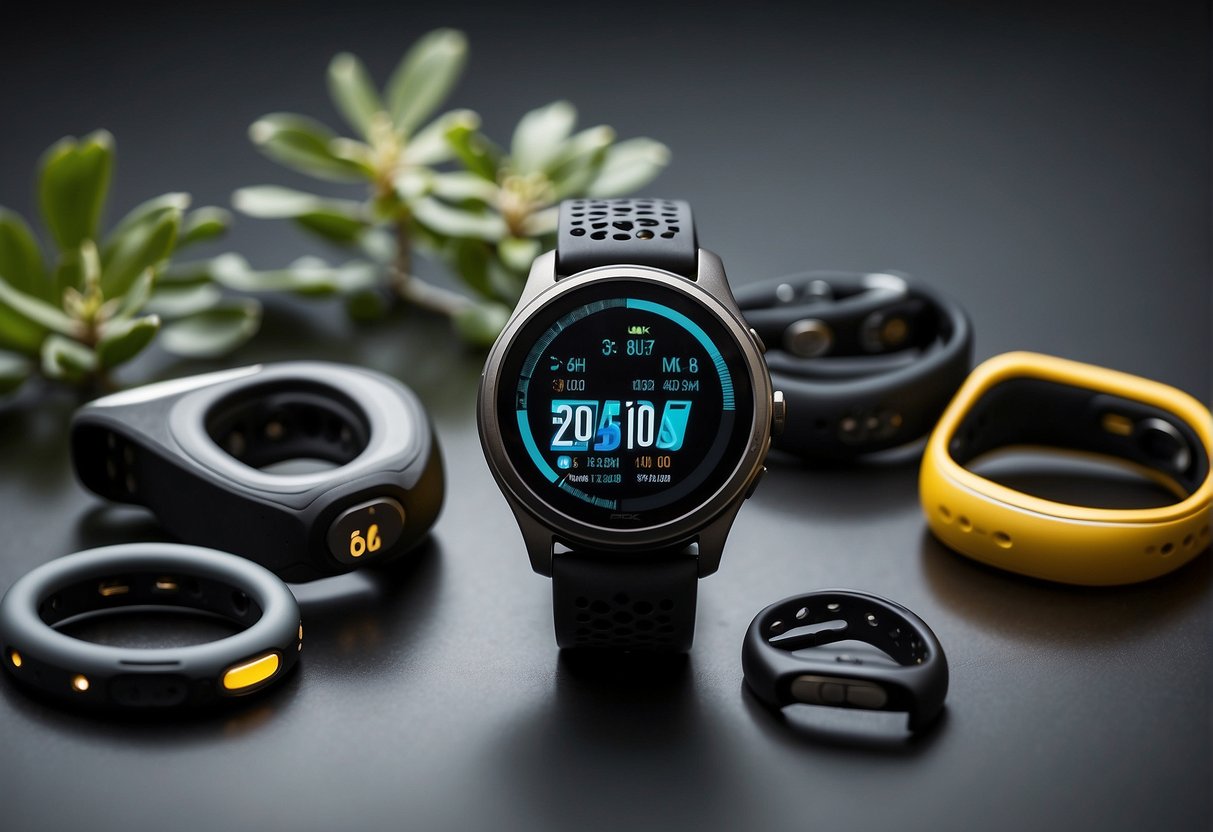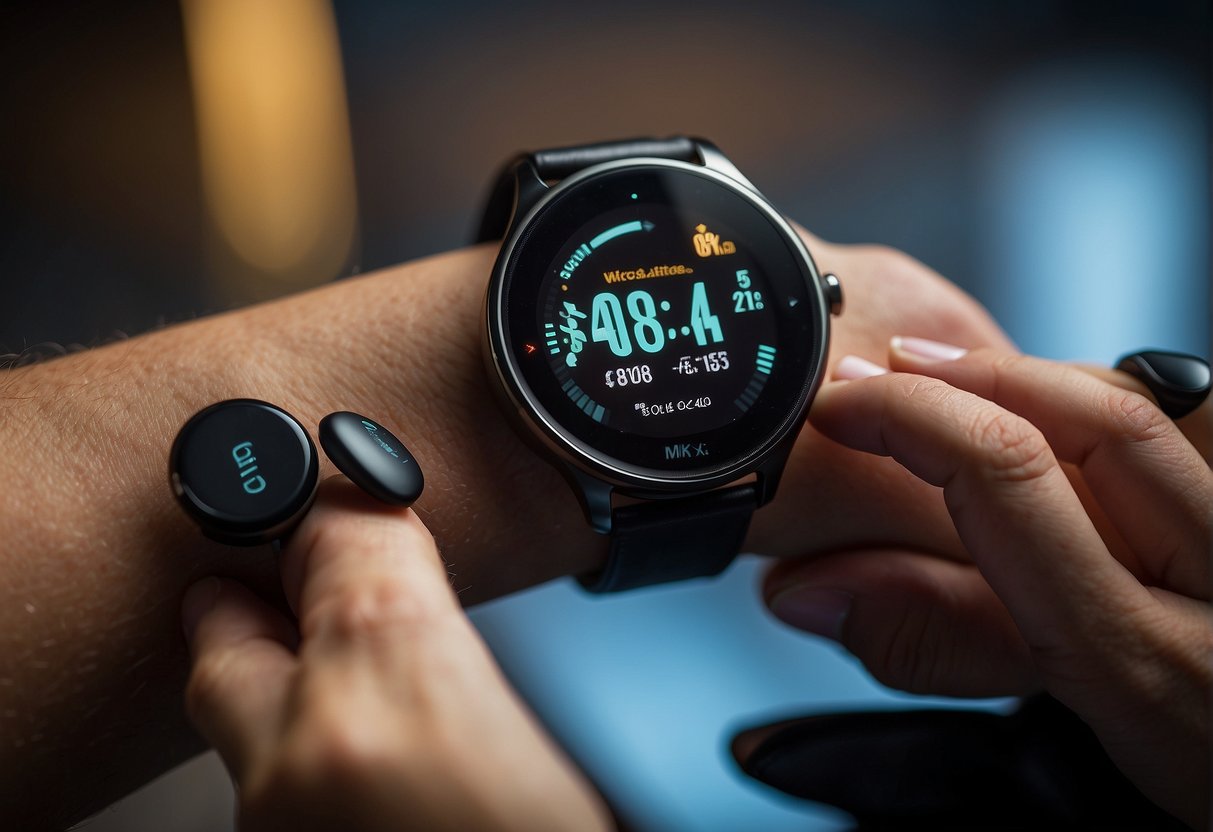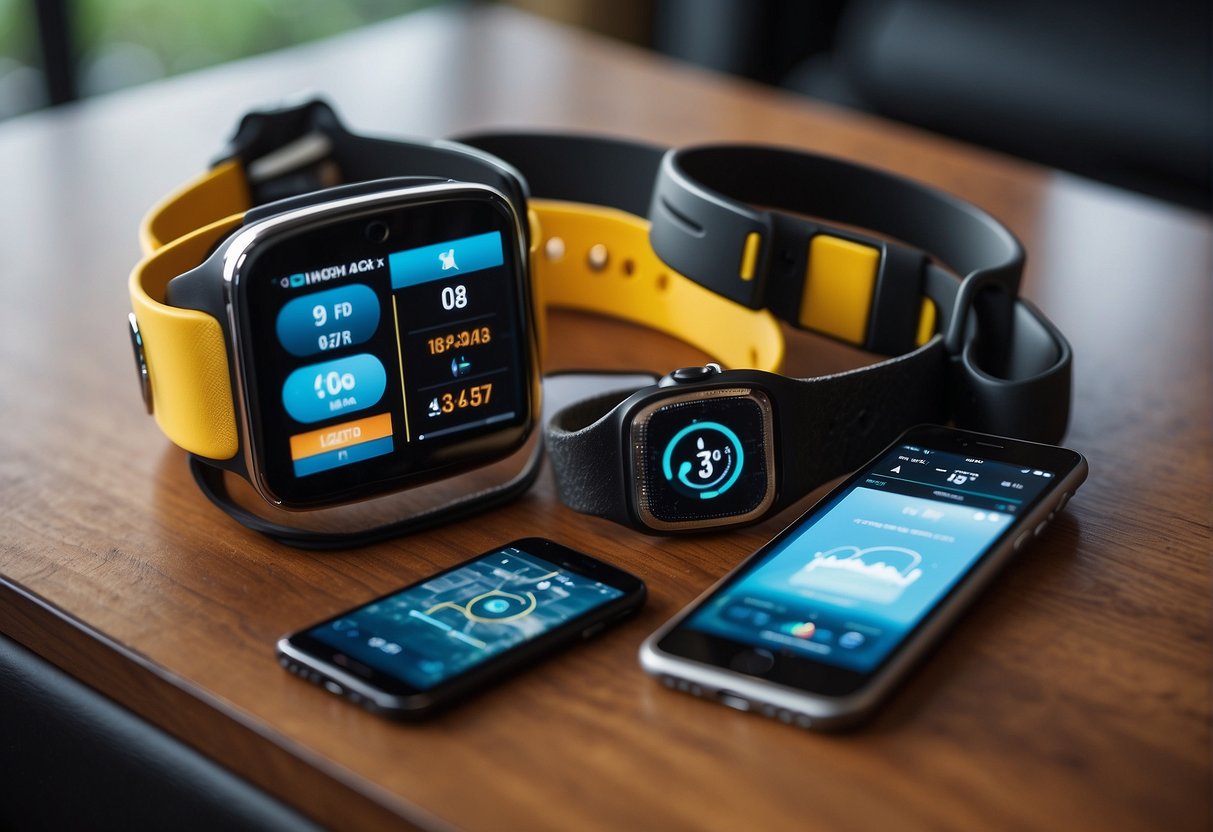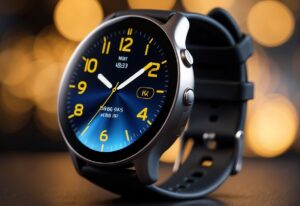Wearable fitness technology has come a long way since the first pedometer was introduced in the market. Today, wearable fitness technology is a multi-billion dollar industry that has transformed the health and fitness industry.
Wearable fitness technology includes devices such as fitness trackers, fitness bands, smartwatches, heart rate monitors, and GPS tracking devices that can monitor heart rate, calories, sitting time, sleep, and more. These devices have revolutionized the way people monitor their health and fitness, enabling them to track their progress, set goals, and stay motivated.
The evolution of wearable fitness technology has been driven by the need to make fitness more accessible, convenient, and personalized.
Wearable fitness technology has made it easier for people to monitor their health and fitness, and has also created new opportunities for the health and fitness industry.
The use of wearable fitness technology has become increasingly popular in recent years, with a growing number of consumers using these devices to track their fitness goals and progress.
Key Takeaways
- Wearable fitness technology has transformed the health and fitness industry, making it more accessible, convenient, and personalized.
- The use of wearable fitness technology has become increasingly popular in recent years, with a growing number of consumers using these devices to track their fitness goals and progress.
- The evolution of wearable fitness technology has created new opportunities for the health and fitness industry, and has also posed new challenges and considerations.
Evolution of Wearable Fitness Technology

Wearable fitness technology has come a long way since the first pedometer was introduced in the 1960s. Today, fitness enthusiasts have access to a wide range of wearable devices that can track everything from heart rate and calories burned to sleep patterns and stress levels.
In this section, we will explore the evolution of wearable fitness technology and the impact of AI on these devices.
From Pedometers to Smartwatches
Pedometers were the first wearable fitness devices, and they were primarily used to track steps taken. However, the introduction of fitness trackers in the early 2000s revolutionized the industry.
Fitness trackers could track not only steps but also heart rate, calories burned, and distance traveled. GPS tracking devices were also introduced, allowing users to track their routes and distance more accurately.
Today, smartwatches are the most popular type of wearable fitness device. Smartwatches combine the functionality of fitness trackers with the convenience of a watch.
They can track a wide range of metrics, including heart rate, calories burned, distance traveled, and even sleep patterns. Smartwatches can also receive notifications from your smartphone, allowing you to stay connected while you work out.
The Impact of AI on Fitness Wearables
Artificial intelligence (AI) has had a significant impact on wearable fitness technology. AI algorithms can analyze data from fitness wearables to provide users with personalized insights and recommendations.
For example, AI can analyze your sleep patterns to determine the best time for you to exercise. It can also suggest workouts based on your fitness level and goals.
AI can also help improve the accuracy of fitness wearables. For example, AI algorithms can analyze data from multiple sensors to provide more accurate heart rate readings. This can be especially helpful for athletes who need precise heart rate monitoring during training.
Current Trends in Wearable Fitness Tech

Wearable fitness technology is constantly evolving, with new features and trends emerging every year. In this section, we’ll explore some of the current trends in wearable fitness tech.
Rise of Health Monitoring Features
One of the biggest trends in wearable fitness tech is the rise of health monitoring features. Wearable devices are no longer just tracking steps and calories burned, but are now able to monitor a wide range of health metrics, including heart rate, blood pressure, and even sleep quality.
This allows users to get a more complete picture of their overall health and wellness, and make more informed decisions about their fitness routines.
Some of the most popular health monitoring features in wearable fitness tech include heart rate monitors, which track the user’s heart rate throughout the day and during exercise, and sleep trackers, which monitor the quality and duration of the user’s sleep.
Other health monitoring features include blood pressure monitors, which can help users keep track of their blood pressure levels, and stress monitors, which use sensors to detect changes in the user’s body that may indicate stress.
Integration with Personal Training and Coaching
Another trend in wearable fitness tech is the integration with personal training and coaching. Many wearable devices now come with built-in coaching and training programs, which can help users achieve their fitness goals more effectively.
These coaching and training programs are often personalized to the user’s fitness level and goals, and can include everything from workout plans to nutrition advice.
Some wearable fitness devices even offer real-time coaching and feedback during workouts, using sensors and algorithms to analyze the user’s movements and provide feedback on form and technique. This can be especially helpful for users who are new to exercise or who are trying to master a new skill or movement.
Consumer Behavior and Market Analysis

Surveys and Consumer Preferences
According to a survey conducted by the American College of Sports Medicine (ACSM), wearable fitness technology is one of the top fitness trends in 2020. The survey also revealed that consumers prefer wearables that track heart rate, calories burned, and activity level.
Additionally, consumers are interested in wearables that have GPS tracking and can monitor sleep patterns.
The community is also a significant factor in the adoption of wearable fitness technology. The same survey found that consumers prefer wearables that can connect to social media, share progress, and compete with friends.
The community aspect of wearable fitness technology encourages users to maintain healthy habits and stay motivated.
Wearable Tech Adoption Among Different Demographics
Wearable fitness technology is not just for younger generations. A market analysis conducted by Future Market Insights (FMI) projects that the wearable fitness technology market value will reach $12.4 billion in 2023.
The report also suggests that older adults, specifically baby boomers, are a growing demographic for wearable fitness technology.
The market analysis also highlights the importance of accessibility and ease of use for wearable fitness technology. Consumers want wearables that are easy to use, have long battery life, and are comfortable to wear.
Wearables that are difficult to use or uncomfortable can discourage users from maintaining healthy habits.
Health and Fitness Applications

Wearable fitness technology has revolutionized the way people approach health and fitness. With the help of wearable devices, people can now track their fitness goals and monitor their progress in real-time. In this section, we will discuss two major applications of wearable fitness technology: Sleep Tracking and Quality Improvement and Exercise for Mental Health and Well-being.
Sleep Tracking and Quality Improvement
Sleep is an essential part of maintaining good health and overall well-being. Wearable fitness technology has made it easier than ever to track sleep patterns and identify areas for improvement.
Sleep tracking devices use sensors to monitor sleep quality by tracking the wearer’s movements, heart rate, and breathing rate. They can also provide insights into the amount of time spent in different sleep stages, such as deep sleep and REM sleep.
By monitoring sleep quality, wearable devices can help people identify factors that may be affecting their sleep, such as stress, diet, or exercise. This information can then be used to make lifestyle changes that improve sleep quality and overall health.
Exercise for Mental Health and Well-being
Exercise has long been known to have a positive impact on mental health and well-being. Wearable fitness technology has made it easier than ever to track exercise and monitor progress towards fitness goals.
Exercise tracking devices can monitor heart rate, calories burned, and distance traveled during workouts.
Beyond tracking physical activity, wearable devices can also provide feedback on mental well-being.
Some devices use sensors to monitor stress levels and provide guided breathing exercises to help users manage stress. Others use biofeedback to help users identify areas of tension in the body, such as the neck and shoulders, and provide feedback on how to release that tension.
Challenges and Considerations
Wearable fitness technology has revolutionized the fitness industry by providing users with real-time data analysis and tracking. However, the technology also faces many challenges and considerations that must be addressed to ensure its effectiveness and user satisfaction.
Data Privacy and Security
One of the primary concerns of wearable fitness technology is data privacy and security. These devices collect personal data such as heart rate, sleep patterns, and physical activity, which can be vulnerable to cyber-attacks and misuse.
Therefore, it is essential to ensure that these devices have adequate privacy and security measures in place to protect user data. This includes features such as data encryption, two-factor authentication, and secure data storage.
Accuracy and Reliability of Devices
Another challenge of wearable fitness technology is ensuring the accuracy and reliability of the devices. These devices rely on sensors to measure various metrics, and any inaccuracies can lead to incorrect data analysis and tracking.
Therefore, it is crucial to ensure that these devices are calibrated correctly and regularly updated to improve their accuracy and reliability.
The Role of Wearables in Professional Sports
Wearable fitness technology has become an integral part of professional sports, helping athletes to optimize their training, performance, and recovery.
Wearables are increasingly being used by coaches, trainers, and athletes to track and analyze various aspects of their physical activity, including heart rate, calorie burn, sleep patterns, and more. Wearable technology is also being used to prevent injuries and aid in rehabilitation.
Training Optimization and Performance
Wearable fitness technology is used by athletes to optimize their training and performance.
Wearables can track an athlete’s heart rate, calorie burn, and other metrics, providing valuable insights into their physical activity.
Coaches and trainers can use this data to adjust training plans, ensuring that athletes are training at the right intensity and frequency to achieve their goals.
Athletes can also use wearables to track their progress and set new goals.
Wearables can provide real-time feedback during workouts, allowing athletes to adjust their form and technique to optimize their performance.
Wearables can also track progress over time, allowing athletes to see how their training is improving their performance.
Injury Prevention and Rehabilitation
Wearable fitness technology is also being used to prevent injuries and aid in rehabilitation.
Wearables can track an athlete’s movements and provide feedback on their form and technique, helping to prevent injuries caused by overuse or improper technique.
Wearables can also track an athlete’s recovery from injury, providing data on their progress and helping to ensure that they are not pushing themselves too hard during the recovery process.
Wearables can also be used to monitor an athlete’s health and well-being.
For example, wearables can track an athlete’s sleep patterns, providing data on their quality and quantity of sleep.
This data can be used to adjust training plans and ensure that athletes are getting enough rest and recovery time.
Future Directions and Emerging Technologies
As the fitness industry continues to evolve, emerging trends in digital technology are poised to transform the way people approach their fitness goals.
Wearable fitness technology, in particular, is expected to continue to grow in popularity, with new devices and features being developed to help users track and monitor their activity levels, sleep patterns, and overall health.
Predicting the Next Big Thing in Fitness Tech
One of the most exciting aspects of wearable fitness technology is the constant innovation and development of new features and devices.
While it can be difficult to predict exactly what the next big thing will be, some emerging trends in fitness tech include:
- Smart Clothing: Clothing embedded with sensors and technology to track various aspects of fitness, such as heart rate, breathing, and muscle activity.
- AI and Machine Learning: As wearable devices collect more data, the potential for AI and machine learning to analyze and interpret that data will only continue to grow.
- Virtual Reality: VR technology is already being used in fitness applications, such as virtual cycling and running, and is expected to become more widespread in the coming years.
Potential for Integration with Medical Healthcare
Another area where wearable fitness technology is expected to have a significant impact is in medical healthcare.
As devices become more advanced and accurate, they have the potential to be used in the diagnosis and treatment of various medical conditions.
For example, wearable devices could be used to monitor patients with chronic conditions, such as diabetes or heart disease, and provide real-time feedback to healthcare providers.
They could also be used in physical therapy, allowing patients to track their progress and receive personalized feedback on their exercises.
Impact of the Pandemic on Wearable Fitness Tech
The COVID-19 pandemic has had a significant impact on the health and fitness industry, and wearable fitness technology is no exception.
With the closure of gyms and other exercise settings, people have turned to home workouts and outdoor activities to stay active.
Wearable fitness technology has become an essential tool for tracking and monitoring fitness activities, providing users with real-time feedback on their progress.
According to a systematic review published in the Journal of Medical Internet Research, wearable devices have played a crucial role in the fight against COVID-19.
Wearable technology, along with AI, has been used to track COVID-19 symptoms and monitor patients’ vital signs. Researchers have also used wearable technology to study the effects of COVID-19 on physical activity levels and mental health.
Wearable fitness technology has also seen a surge in popularity during the pandemic.
According to a BBC report, digital fitness apps and wearable devices have seen a significant increase in usage since the pandemic began.
Strava, a popular fitness tracking app, reported a rise in the total amount of activity logged on the app, with running and cycling proving most popular. A record number of people also signed up for virtual fitness classes and online coaching sessions.
The pandemic has also accelerated the development of new wearable fitness technology trends.
According to a Forbes article, wearables are one of the biggest trends in fitness and wellness technology in 2022.
The article predicts that wearables will help people take control of their physical fitness and mental health.



